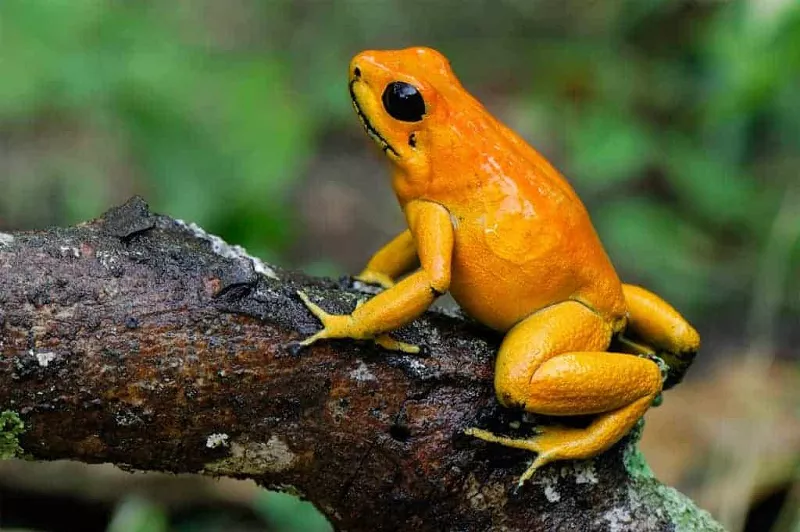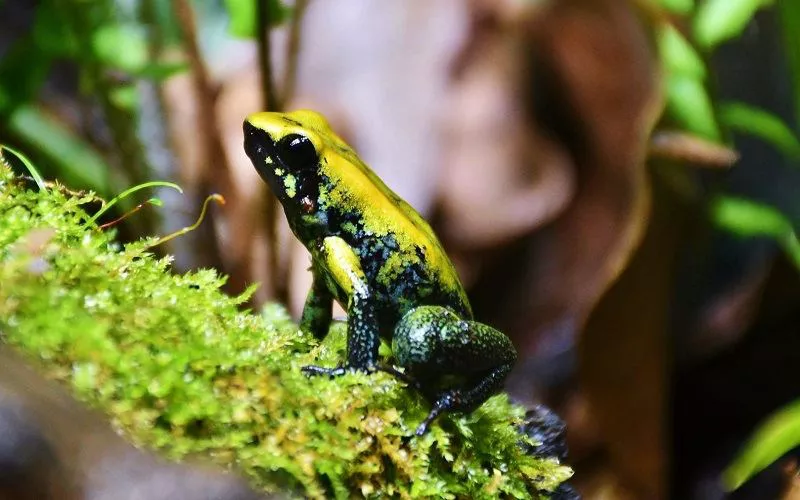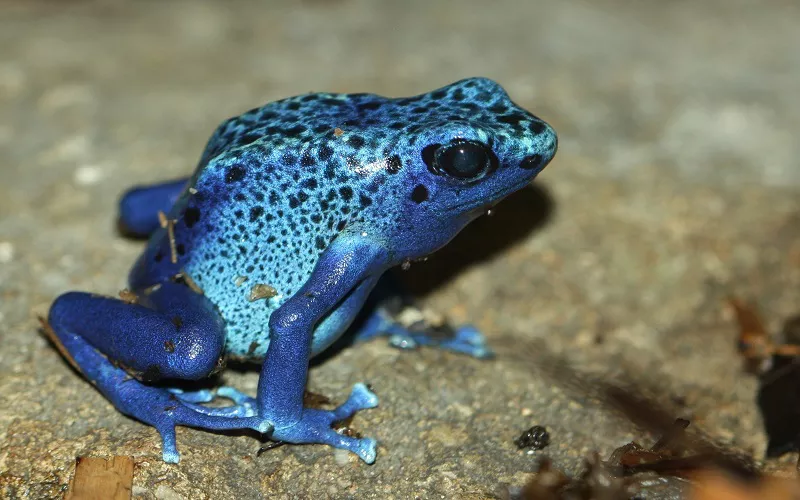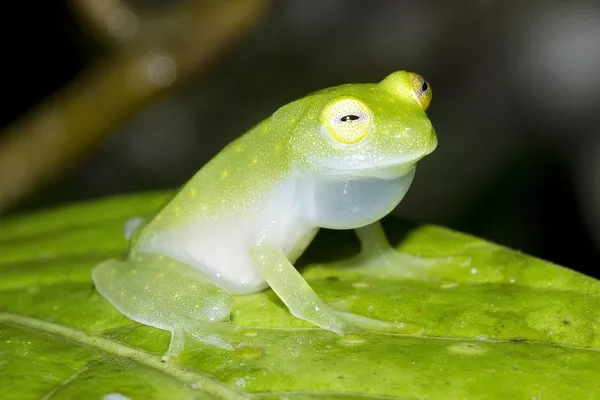In the lush rainforests of Central and South America, amongst the vibrant tapestry of flora and fauna, lurk some of nature’s most intriguing yet perilous creatures – the poison dart frogs. These small, brightly colored amphibians hold a fascination for many, but behind their beauty lies a deadly secret. Among them, three species stand out for their remarkable toxicity and distinctive characteristics: the Golden Poison Dart Frog (Phyllobates terribilis), the Black-legged Poison Dart Frog (Phyllobates bicolor), and the Blue Poison Dart Frog (Dendrobates tinctorius azureus). Let’s delve into the world of these fascinating creatures and uncover their secrets.
Golden Poison Dart Frog: The King of Toxicity

Scientific Name: Phyllobates terribilis
Toxicity: Produces enough poison to deliver a fatal dose to 10 humans.
Diet: Derives poison from the insects it eats.
Habitat: Endangered due to habitat loss.
The Golden Poison Dart Frog, with its striking golden coloration, is renowned as the most toxic amphibian on the planet. Indigenous to the rainforests of Colombia, this species boasts a deadly secret – its skin secretes a potent neurotoxin known as batrachotoxin, which is derived from the insects it consumes. The mere touch of its skin can spell doom for predators and unsuspecting humans alike. Despite its diminutive size, measuring no more than a few centimeters in length, the Golden Poison Dart Frog wields a lethal potency that surpasses even some of the deadliest snakes and spiders.
Unfortunately, the very characteristics that make this frog so remarkable also render it highly vulnerable. Habitat loss, primarily due to deforestation and illegal logging, has led to a decline in populations across its native range. Conservation efforts are underway to protect this species and its fragile ecosystem, but much work remains to be done to ensure its survival for future generations.
Black-legged Poison Dart Frog: A Deadly Relative

Scientific Name: Phyllobates bicolor
Similarity to Golden Poison Dart Frog: Closely related and historically used for poison darts.
Toxicity: Smaller than Golden Poison Dart frogs but still remarkably dangerous.
The Black-legged Poison Dart Frog shares a close evolutionary lineage with its more famous cousin, the Golden Poison Dart Frog. Found in the dense rainforests of western Colombia, this species exhibits similar warning coloration, albeit with black legs contrasting its vibrant body. While not as large or as toxic as the Golden Poison Dart Frog, the Black-legged variant still packs a potent punch. Its skin secretions contain a cocktail of alkaloids, albeit in lesser quantities, capable of causing paralysis and death in potential predators.
Historically, indigenous tribes of Colombia utilized the toxins from these frogs to coat the tips of their blow darts for hunting purposes, hence the common name “poison dart frog.” However, like its golden counterpart, the Black-legged Poison Dart Frog faces significant threats from habitat destruction and illegal pet trade. Conservation efforts are crucial to safeguarding this species and preserving the delicate balance of its rainforest home.
Blue Poison Dart Frog: Beauty and Toxicity

Scientific Name: Dendrobates tinctorius azureus
Distinctive Feature: Bright blue coloration.
Popular as Exotic Pets: Vivid colors contribute to their popularity.
Toxicity: Secrete poison from their skin.
The Blue Poison Dart Frog, with its stunning azure hue, epitomizes the allure of these toxic amphibians. Native to the tropical forests of Suriname and Brazil, this species captivates with its vibrant coloration and intricate patterns. Despite its diminutive size, measuring no more than a few centimeters, the Blue Poison Dart Frog possesses a formidable defense mechanism – its skin secretes potent alkaloid toxins, making it unpalatable and even deadly to potential predators.
In recent years, the Blue Poison Dart Frog has gained popularity among exotic pet enthusiasts due to its striking appearance and relatively docile nature in captivity. However, the pet trade poses a significant threat to wild populations, as indiscriminate collection for the pet industry can decimate local populations and disrupt fragile ecosystems. Conservationists emphasize the importance of responsible pet ownership and sustainable practices to ensure the continued survival of this mesmerizing species in its natural habitat.
In conclusion, the world of poison dart frogs is as fascinating as it is perilous. From the lethal potency of the Golden Poison Dart Frog to the striking beauty of the Blue Poison Dart Frog, these amphibians serve as a poignant reminder of nature’s delicate balance and the fragility of our planet’s ecosystems. As we strive to protect these enchanting creatures and their rainforest habitats, we also safeguard the rich tapestry of life that makes our world so wondrous.
You Might Be Interested In:
- Unveiling The Top 9 Strongest Animals In The World!
- The World’s Deadliest Spider (Plus Picture!)
- Birds: You May Not Know” href=”https://www.validdownloads.com/archives/1824″ rel=”bookmark”>Unveiling The 13 Best Pet Birds: You May Not Know
- 8 Most Poisonous Crabs In The World


















